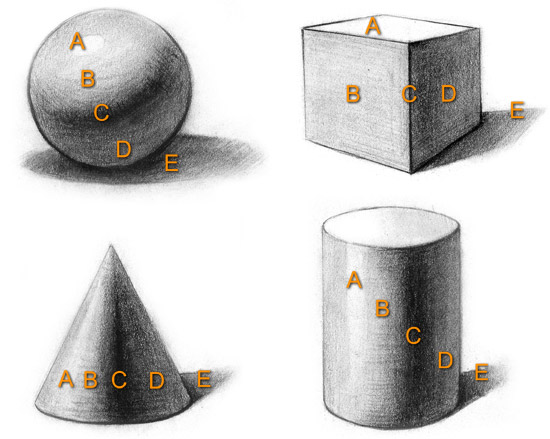Direct Light – Lighting in which the light goes straight from the source to the lit object. An example is a light bulb or the sun.
Compare that to indirect lighting, which is when there is no single direct light source. The object is lit by scattered or bounce light. For example on a cloudy day when the sun is covered by clouds, its rays are scattered and everything is lit indirectly.
All forms, when lit with direct light have the same elements – highlight, halftone, core shadow, reflected light, and cast shadow. It’s an essential skill to be able to quickly identify each element on a given object and to execute each accurately.
A. Highlight
B. Halftone
C. Core Shadow
D. Reflected Light
E. Cast Shadow
